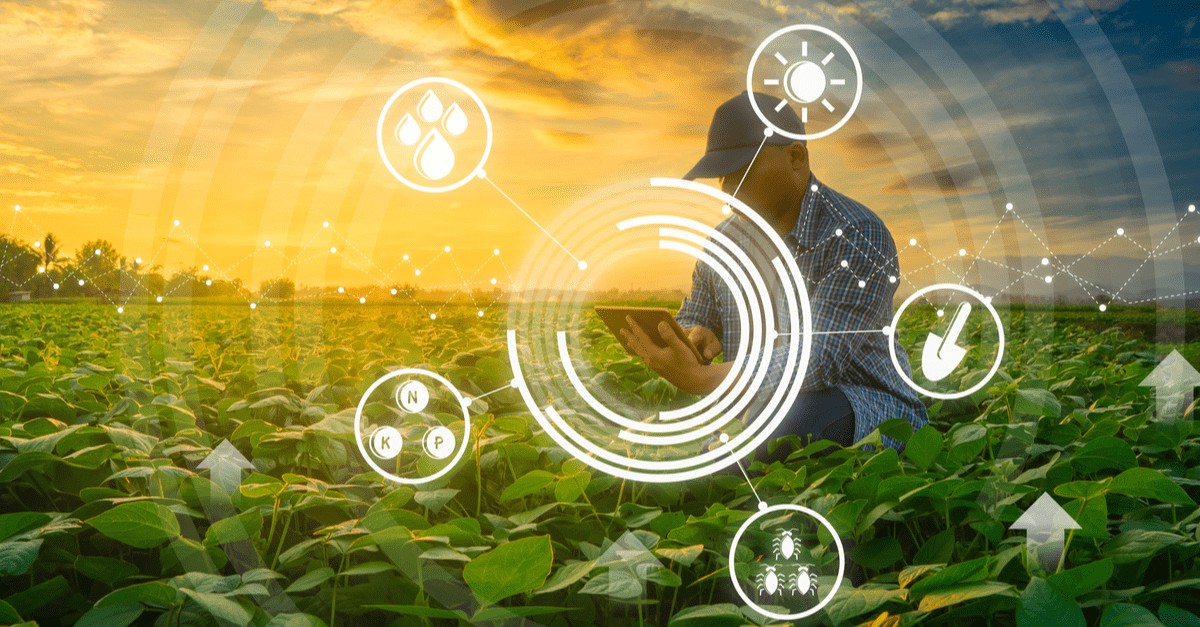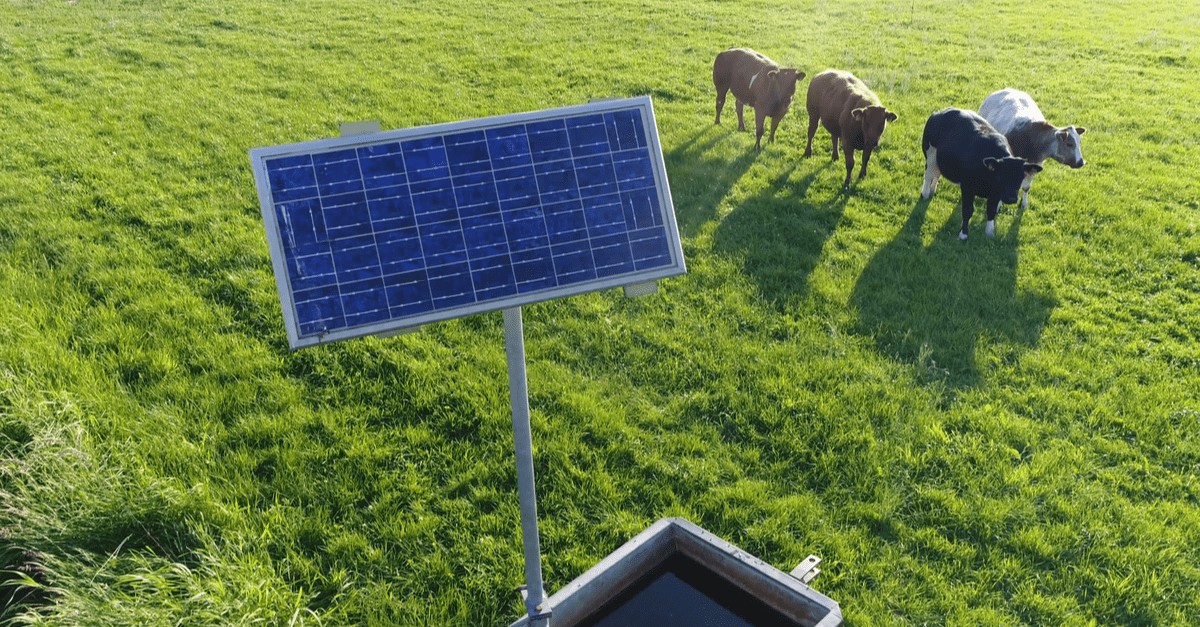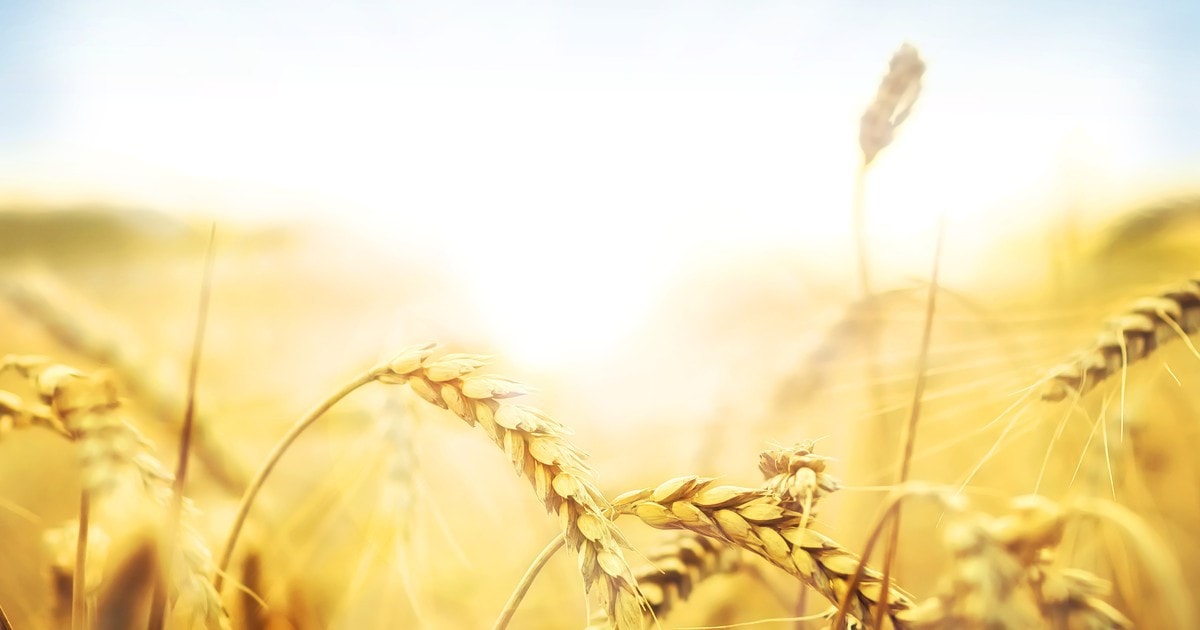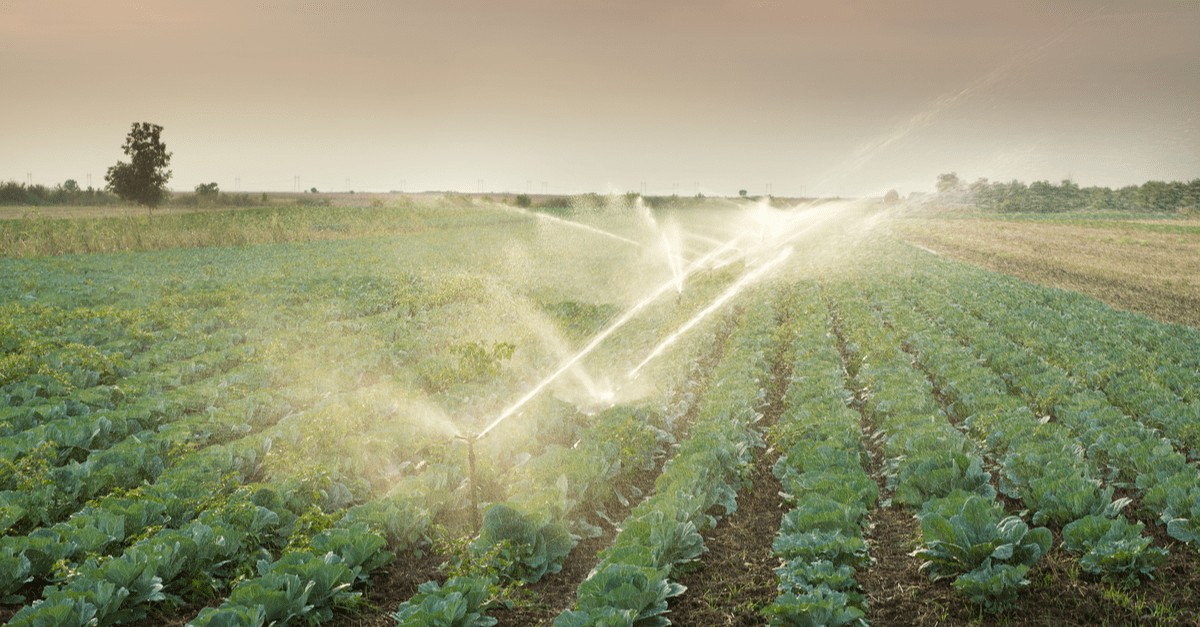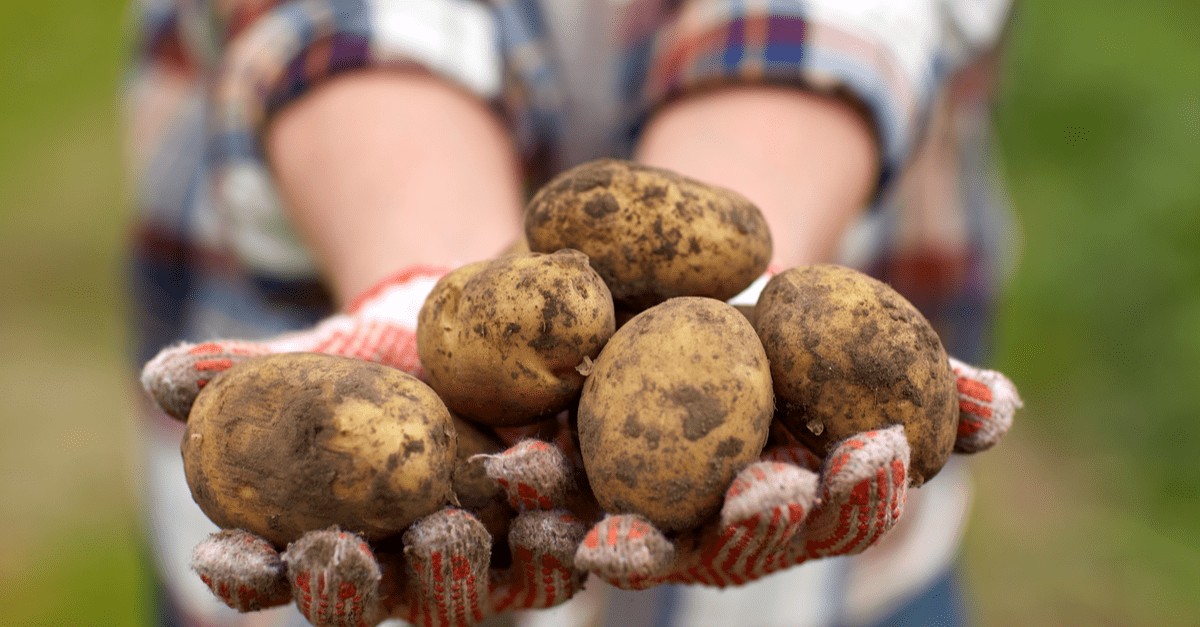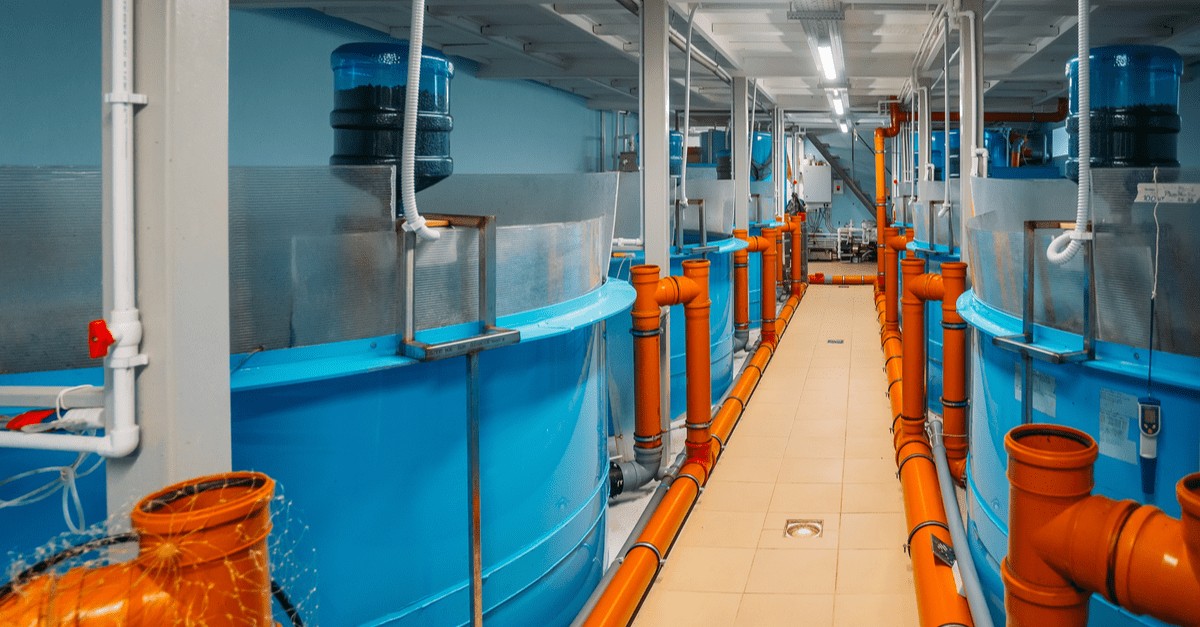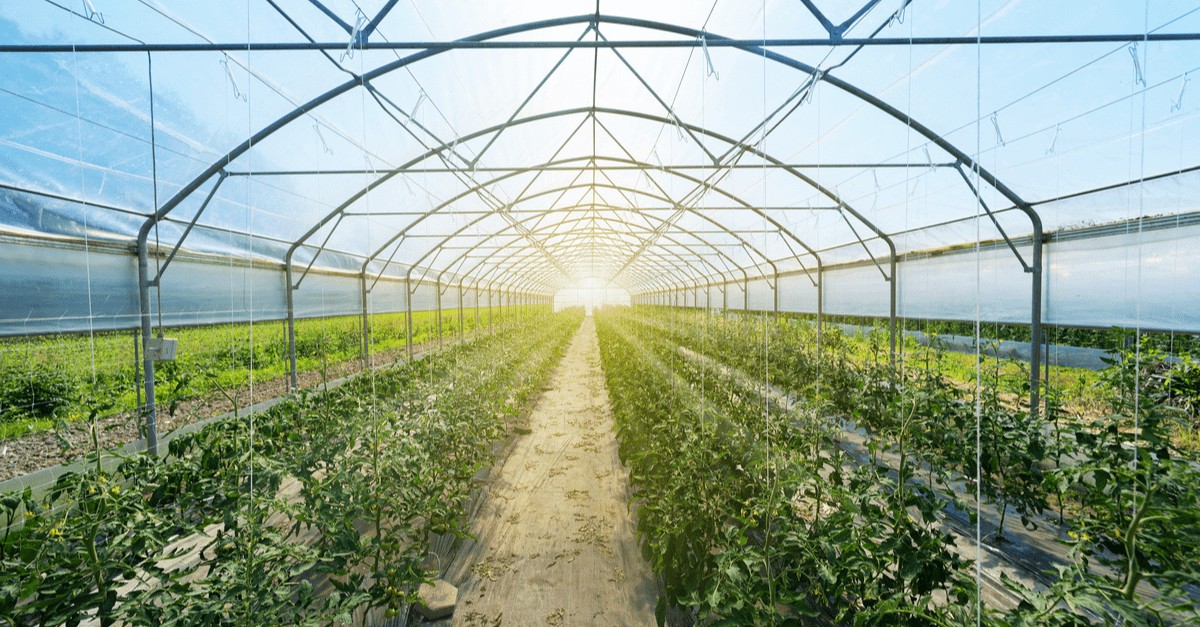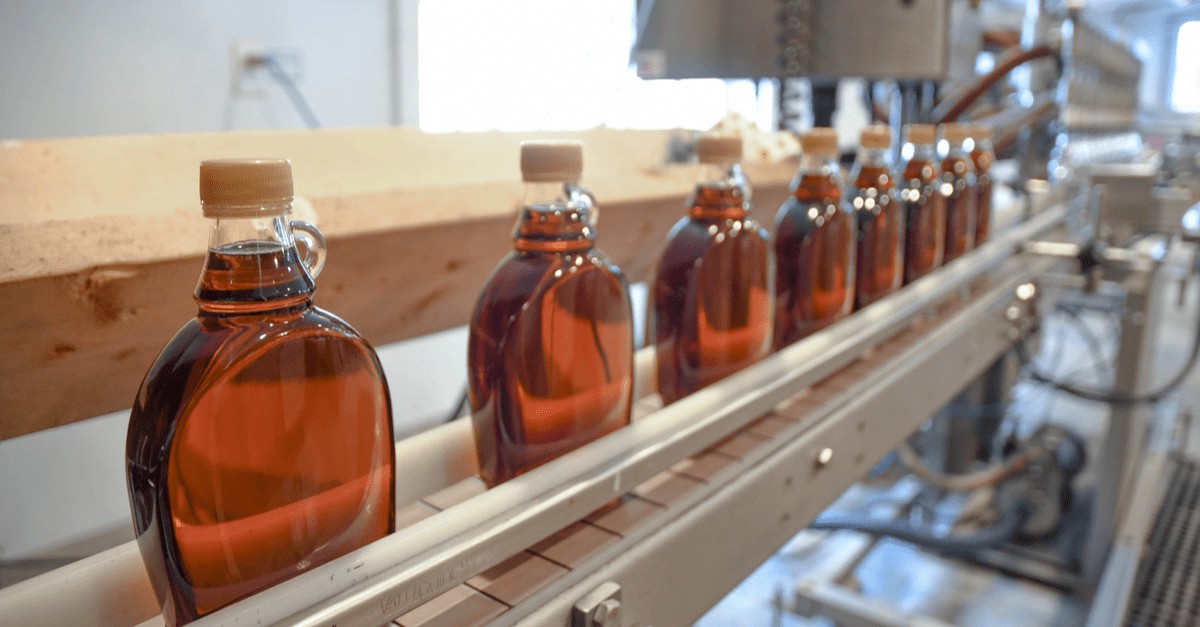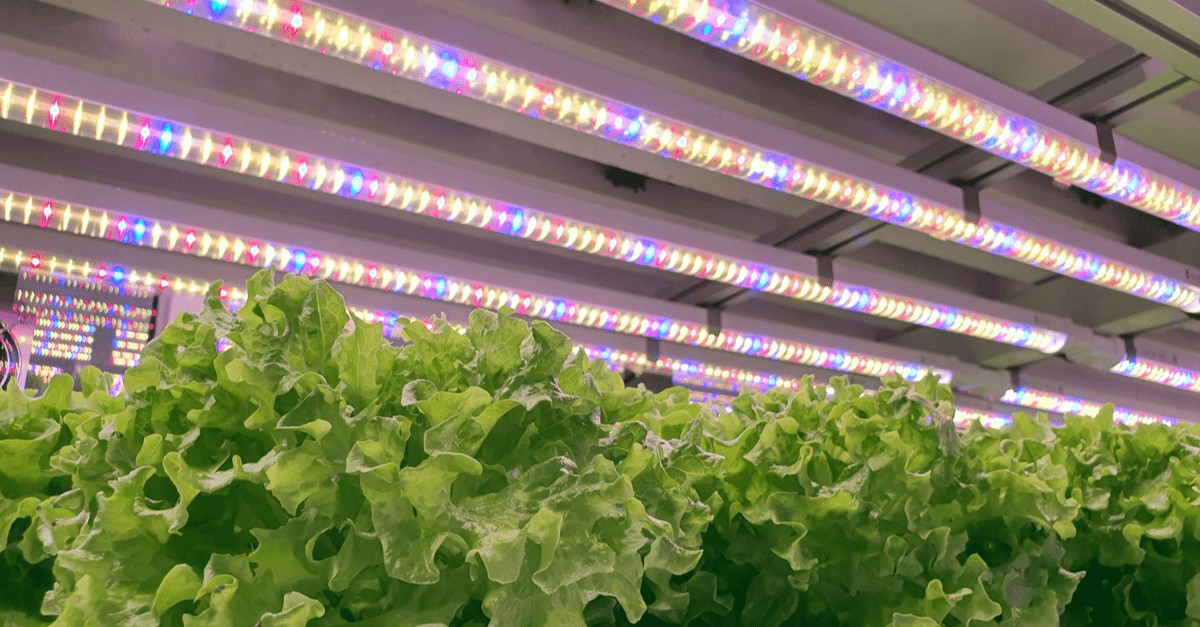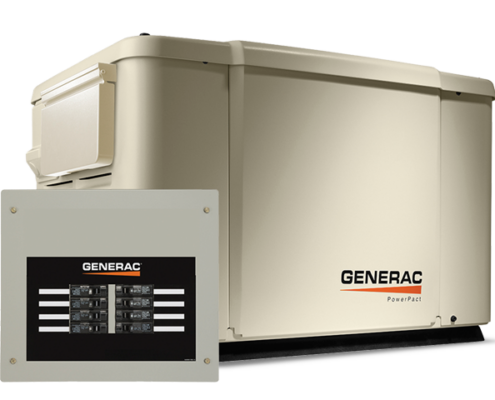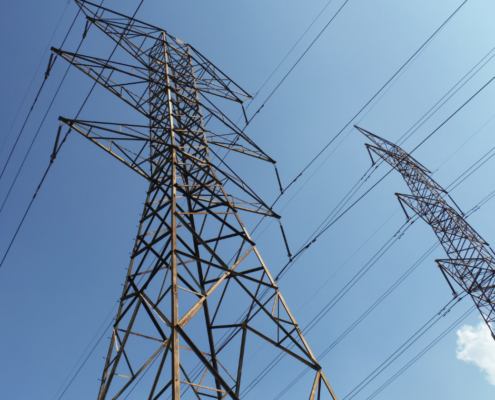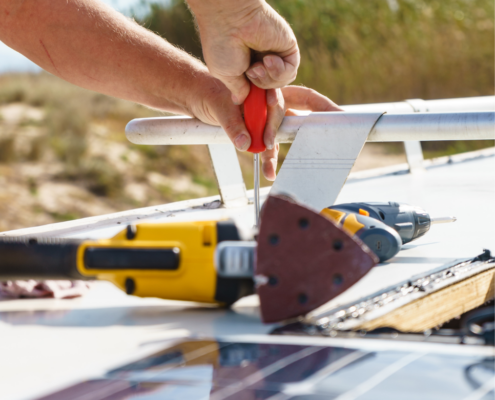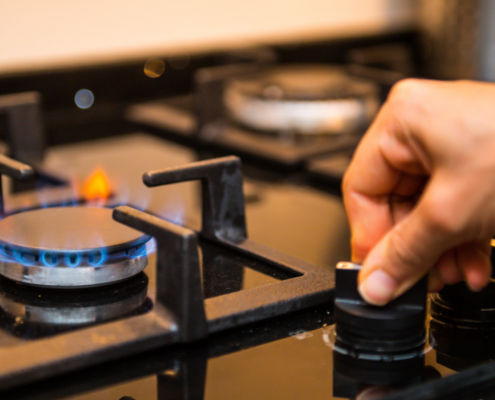Last Updated on May 22, 2022 by Mary Pressler
Smart Farming and the Future of US Agriculture
The US agriculture and food industries contribute over $1.1 trillion per year to the gross domestic product (GDP) according to the USDA, representing over 5% of the American economy. Agriculture also represents 4.6% of industrial energy consumption, according to the US EIA.
The word “agriculture” is often associated with harvesting crops. However, agribusiness is a very broad sector that covers many industrial activities and facilities. This includes many energy-intensive processes, such as:
- Pumping for irrigation, aquaculture, milk processing, etc.
- Grain drying and silo ventilation
- Greenhouse heating
- Outdoor and facility lighting
- Refrigeration and heating in general
Compared with residential and commercial buildings, energy efficiency requires a different approach in the agriculture sector. Reducing energy consumption is important, but agribusinesses are also focused on increasing yield per unit of energy consumed. In many cases, a higher energy consumption makes sense if yield increases by a higher proportion.
According to the Extension Foundation, US farms doubled their energy efficiency in 25 years from 1994 to 2019. However, there are still plenty of opportunities to save energy. Many lighting systems are outdated, and many facilities have old electric motors with low efficiency and no speed control.
There is also an opportunity to improve energy efficiency in farmer housing, which can use the same measures that are common in urban homes – efficient HVAC, insulation, air sealing, etc. Many farms also have suitable conditions for wind power: they could install their own turbines, or even rent parts of their land for utility-scale wind farms. On the other hand, opportunities to use wind power are very limited in urban locations.
Since the agriculture industry is so broad, we will provide an overview of energy efficiency measures for specific subsectors and installations:
- Dairy farms
- Grain drying
- Irrigation
- Potato storage
- Aquaculture
- Greenhouses
- Maple syrup production
- Lighting systems
The University of Wisconsin-Madison (UW) and Pennsylvania State University (PSU) both have energy efficiency programs for the agriculture sector, part of their Division of Extension. They have studied the energy performance of many types of equipment and facilities, and their research covers the areas listed above.
Energy Efficiency Measures for Dairy Farms
According to UW research, dairy farms have an average electricity usage of 800-1200 kWh per cow per year. However, one study found dairy farms consuming over 1700 kWh per cow. This electricity consumption is broken down as follows:
- 46% for milk harvesting, which includes vacuum pumps, milk cooling and water heating.
- 46% for lighting and ventilation systems
- 8% for other purposes, such as feeding and manure handling
Milk cooling is the largest electricity expense in most barns, representing 25% of consumption. Lighting is also a major expense, representing 17% of consumption in tie-stall barns and up to 26% in freestall barns. Ventilation accounts for around 22% of energy consumption in both barn configurations. The following table summarizes some energy efficiency measures that are considered effective in dairy farms.
| Application | Energy Efficiency Measures |
| Vacuum pumps | A variable frequency drive (VFD) can save 50-65% with equivalent or better performance. Generally, VFDs are cost-effective in dairy farms that milk 8 or more hours per day. Regular tune-ups for the vacuum system are also recommended to conserve performance. |
| Milk cooling | There are three promising technologies:
Dairy farmers must be aware that #2 and #3 are competing systems, which makes them mutually exclusive. The best option can be identified with a feasibility study. |
| Milk pumping | A VFD can control milk flow through a precooler or heat exchanger, to improve cooling efficiency. |
| Water heating | There are many options to reduce heating costs:
|
| Ventilation | Energy savings of 20-30% are possible by upgrading exhaust fans to higher efficiency units, and larger fans provide more cfm per watt. The fan type selection is important:
Regardless of the type, fans need proper maintenance: Loose belts can reduce output by 30%, and dirty shutters can reduce output by 40%. |
| Lighting | There are two main ways in which dairy farms can waste energy on lighting: having excessive light, or using inefficient lamp types like HID or fluorescent. An LED upgrade saves 30-50% with respect to fluorescent lighting, and over 60% with respect to HID. |
| Motor upgrade | Upgrading to motors with a higher efficiency rating like NEMA Premium is an effective way to save energy in many industries, including agriculture. However, it is important to check that the new units are rated for farm duty. |
*Dairy farmers should also avoid oversized pumps in all applications where they are used, to further improve their energy efficiency.
Energy Efficiency Measures for Grain Drying
Grain-producing farms can achieve a significant reduction of energy expenses by improving the efficiency of their grain drying operations. Grain dryers can be classified into batch and continuous flow types. Continuous flow dryers can also be classified into subtypes based on how air moves with respect to the grains – these include cross flow, counter flow and mixed flow.
Other than their physical configuration, grain dryers can also be described based on how they use air during the drying process:
- Using unheated ambient air
- Heating the air <10°F with solar or electric resistance heating.
- Heating the air to higher temperatures with fossil fuels like propane or natural gas.
Ideally, crops should be left to dry in the field when possible to save energy. However, this can be limited by two factors: natural drying can be very slow when weather conditions are not favorable, and field losses may reach a point when they outweigh energy savings. The University of Kentucky has developed several energy calculators for farming operations, and this includes grain drying and energy storage.
Grain farmers must be aware that overdrying is a waste of energy. Overdrying also reduces revenue and profits: crops are sold by weight, and excessively dry grains weigh less. For this reason, there are recommended moisture levels for each grain.
The most effective energy efficiency measures for grain drying will depend on the crop and the dryer configuration. Foreign material should also be removed, since it wastes drying power.
Batch Grain Dryers
When using a batch dryer, grain from the field at 20-22% moisture can often be dried with ambient air only. A fall season with low humidity provides the ideal conditions for this drying method, since most of the energy consumption will be fan power. A small resistance heater or solar collector may add heating if necessary, up to 10°F.
A high temperature bin dryer has the same basic layout as an ambient air dryer, with the addition of heating units that are typically fired by natural gas or propane. With this type of dryer, stirring can reduce energy costs and drying times by up to 25%. One batch per day is usually handled, unless the dryer has high-capacity conveying equipment.
Continuous Flow Grain Dryers
In the case of cross-flow dryers, energy efficiency is determined by the plenum temperature and airflow. Top efficiency is achieved at high temperature and low airflow, but the impact on grain quality must also be considered for the drying conditions.
A counter-flow dryer is around 40% more efficient than a cross-flow dryer, and existing storage bins can be retrofitted with this system. Counter-flow dryers are among the most efficient options available for grain farmers.
A mixed-flow dryer has both counter airflow and concurrent airflow, hence its name. This allows a higher temperature than in cross-flow dryers without crop damage, and efficiency is similar to that of counter-flow dryers.
The following energy efficiency measures are effective for continuous flow dryers in general:
- Heat recovery can achieve 10-25% energy savings by recycling exhaust air from the cooling tower or the lower heating section. Generally, this is a built-in feature that cannot be added easily to existing dryers, and it causes a slight drop in capacity.
- Using a separate bin for slow cooling can reduce energy costs by 10-15%, while improving grain quality. On the other hand, grain cooling inside the dryer is not recommended, since capacity is reduced and the sudden temperature damages grain.
- Two-bin dryeration can reduce energy costs by 20-25%, allowing hot grain to steep for 4-12 hours, and then cooling it with fans. Two bins are necessary for continuous production, since one can be unloaded and reloaded while the other is used for steeping.
The Combination Drying Method
Combination drying is the most efficient method, and it can be applied with both batch dryers and continuous flow dryers. This method combines the benefits of high temperature and ambient air drying, and the basic principle is the following:
- A high temperature dryer is used to reduce grain moisture to 20-22%.
- The grain is then transferred to a low temperature or ambient air dryer to finish the process.
This method uses more electricity than high-temperature drying alone, but gas consumption is reduced significantly. Normally, the process would consume 98% gas and 2% electricity, while combination drying uses 75% gas and 25% electricity.
Drying Soybeans: Special Considerations
Soybeans are often harvested above storage temperature, due to weather and time limitations. Soybeans can be harvested without too much damage up to 18% moisture, but they need artificial drying above 13% moisture. The ideal moisture range is 13-15%.
- Controlling the drying process is very important: soybeans crack when dried too quickly, or when the air is too dry.
- They also become very brittle when dried below 10% moisture.
Air-only drying is possible, but it requires certain conditions to be viable. Generally, air drying is effective early in the fall, in years with warm and dry weather. Additional heating is necessary later in the fall, or when general weather conditions have been cold and damp. Heated air may also be necessary when there are time constraints, since ambient air drying is slow.
Energy Efficiency Measures for Irrigation Systems
The University of Wisconsin conducted a study with 497,000 acres and 2,400 farms, and their main findings were the following:
- 97% of irrigation systems use sprinklers, and 86% of them use center pivot systems.
- The typical installed cost of a center pivot system is $1,000 per acre.
- 31% of systems use high pressure, 54% use medium pressure, and 15% use low pressure.
- 73% of irrigation pumps use electric motors, 24% use diesel engines, 2.6% use gasoline engines, and less than 1% are driven by natural gas or LP engines.
There is an excellent opportunity to save energy by reducing the operating pressure of center pivot systems. Generally, this can be accomplished with newer sprinkler technologies. A change from high pressure (>60 psi) to medium pressure (50-60 psi) can achieve energy savings of 15-20%, while a reduction to low pressure (30 psi) saves around 30%.
Regular testing is also recommended for irrigation systems, since it helps find issues like damaged nozzles and water leaks. Pumping systems should also be inspected, to prevent issues like cavitation and motor malfunctions.
When inspecting an irrigation system, another important factor is uniformity testing – checking that water is distributed uniformly in the field. Water is used more efficiently when applied uniformly, and this saves on pumping.
The University of Nebraska-Lincoln has developed two calculators to estimate irrigation costs, based on site conditions and system features – IrrigatePump is used to estimate upgrade costs and payback periods, while IrrigateCost can calculate ownership and operation costs.
Energy Efficiency in Potato Storage Facilities
Potato storage facilities require a high airflow immediately after harvesting to remove heat, and ongoing ventilation during storage to remove respiration products. The initial ventilation needs are much higher, but many facilities use their fans all full power all the time.
- This represents a waste of energy, and there is a significant savings opportunity by slowing down fans with variable frequency drives (VFD).
- According to various studies in Maine and Idaho, the potential savings are 33-60% when using fan VFDs in potato storage facilities, and their payback period of 2-3 years.
The standard option has been using banks of single-speed fans, sized for the initial cooling demand, but these lack speed control by themselves. As a result, potatoes are over ventilated during the storage period.
While it would be possible to alternate between periods of maximum and zero airflow, the University of Idaho found that constant airflow at reduced speed is optimal for storage. An additional benefit of using fans with VFDs is reducing condensation issues.
When potatoes have been cooled to the storage temperature, a high airflow can actually cause shrinkage and losses. The ideal relative humidity for ventilation is 95-98%, since shrinkage losses are duplicated when RH is reduced from 95% to 90%.
Energy Efficiency in Aquaculture
Open pond aquaculture has been the traditional method, but its use is greatly limited by environmental regulations. Aquaculture with water recirculation offers many advantages:
- Environmental control
- Water conservation
- Protecting fish from predators
- Protecting fish from diseases carried by wild fish
However, recirculation aquaculture has a high energy cost, since the water must be kept in constant motion to supply oxygen and remove waste.
Recirculation aquaculture normally uses centrifugal pumps, but air lift pumps can reduce energy costs by up to 35% in low-head systems, while also having lower upfront costs. Other than saving energy, an air lift pump performs useful functions like aeration, carbon dioxide removal, and foam fractionation.
Energy Efficiency Measures for Greenhouses
Energy represents 15% of total costs in greenhouses, making it the 3rd largest expense after labor and plant materials. The typical energy budget of a greenhouse is broken down as follows:
- Space heating represents 70-80%
- General electricity consumption represents 10-15%
- Transportation accounts for the rest of energy consumption
An energy efficient greenhouse depends on two main elements: an efficient heating system, and a high-performance envelope. The operating costs and environmental footprint can be further reduced with alternative fuels such as biomass. According to the University of Connecticut, many greenhouse improvements can achieve a payback period of less than two years.
Since heating is the largest energy expense in a greenhouse, heat loss prevention is key for energy efficiency. There are four main ways in which a greenhouse can lose heat: conduction, convection, radiation and infiltration. The following are some of the energy efficiency measures that have been analyzed by the University of Wisconsin:
| Greenhouse Energy Efficiency Measure | Typical Savings |
| Infrared and anti-condensation treated films | 15-20% |
| Insulated side walls | 558 therms of natural gas per year, for a 28ftx100ft greenhouse |
| Night curtains | 20% to 70% when closed |
| Air sealing | 3-10% of heating costs in a typical greenhouse |
| Double polyethylene cover for glass greenhouse | Up to 50% heat loss reduction |
| Windbreaks | 5-10% heat loss reduction |
The glazing material used is a very important decision when building a greenhouse. Single-pane glass has a service life of over 25 years, but the structure is expensive and its typical heat loss is 1.1 BTU/sf-hr-°F (BTUs per square feet, per hour, per °F of temperature difference). On the other hand, double polyethylene film only loses 0.5-0.7 BTU/sf-hr-°F while having a lower installation cost, but the typical service life is only 3-4 years.
Wind breaks are also important, since heat loss doubles with 15 mph wind. One option is shielding the greenhouse with 4 or 5 rows of trees, mixing coniferous and deciduous species.
Greenhouse Heating
The greenhouse heaters also have an impact on energy efficiency, and they can be vented or unvented. The following table compares the efficiency of the four main types of vented unit heaters, considering both thermal efficiency (TE) and seasonal efficiency (SE):
| Vented Heater Type | TE | SE |
| Gravity vented | 80% | 65% |
| Power vented | 80% | 78% |
| Separated combustion (SC) | 80% | 80% |
| High-efficiency condensins with SC | 93% | 93% |
Thermal efficiency refers to the performance of the unit heater only, while seasonal efficiency describes the overall system performance under changing weather conditions. The installed price depends on project conditions, but it generally increases along with the SE. In greenhouses with gravity-vented heaters, a conversion to power-vented normally has a payback period of less than two seasons.
There are also non-vented unit heaters, with a typical TE of 99% and SE of 80%. They increase both carbon dioxide and humidity levels – while the CO2 increase is beneficial for plants, the moisture increase can cause condensation issues and disease. This type of heater must be used with air intakes, to compensate for the lack of venting.
The heat distribution method also affects efficiency, and the UW has found that under-bench heating can lower costs by 20-25%. Adequate maintenance is also also important, achieving up to 20% fuel savings.
Hydronic heating is also an option, using a high-efficiency boiler and hot water circulation. This configuration can achieve an efficiency of over 90%, especially when using a modern condensing boiler. However, this configuration has a higher cost than unit heaters.
Other Energy Efficiency Measures for Greenhouses
Additional savings can be achieved with environmental controls, which ensure that all systems in the greenhouse are used optimally.
With respect to ventilation, fans with a larger diameter are generally more efficient, especially when controlled with variable frequency drives (VFD). The motors should be totally enclosed and with suitable bearings for the application.
Additional savings are possible with a passive solar design for the greenhouse, and by using LEDs for supplemental lighting.
Energy Efficiency Measures for Maple Syrup Production
According to the Ontario Ministry of Agriculture in Canada, 2.7-3.4 gallons of fuel are required to produce one gallon of maple syrup. This is equivalent to an energy consumption of 400,000-500,000 BTU per gallon. Vermont, New York and Maine are among the top producers of maple syrup in the US.
- Under normal conditions, energy represents 26-34% of maple syrup production costs.
- However, when reverse osmosis is used, energy usage is reduced to only 8-11% of the production cost.
- Reverse osmosis is similar to desalination, and it eliminates 75% of the water contained in the sap, cutting energy usage by 70%.
The following are some additional recommendations tan can further improve productivity and efficiency in maple syrup production:
- Adequate maintenance for evaporators and burners, which includes cleaning the nozzles and evaporator pans.
- A sap preheater can use steam from the evaporator, improving efficiency by 15%.
- Economizer units use the combination of a preheater and evaporator, increasing productivity by 60-65% without an increase in energy consumption.
In the case of older maple syrup farms, energy savings can also be achieved by using a modern evaporator design. These combine features like economizers, fuel preheaters, high-efficiency insulation, and chamber designs that maximize heat transfer.
Energy Efficient Lighting for the Agriculture Sector
Like in any commercial or industrial application, and upgrade to LED lighting can achieve significant savings in farms. LEDs typically save 30-50% when replacing fluorescent lamps, and over 60% when replacing HID lamps. However, it is important to note that lighting has a dual function in agriculture. It provides visibility for humans, like in any application, but the lighting design also influences the productivity of plants and animals.
Lighting design is especially important in growing operations, where it supplements sunlight to simulate longer days. Also, the lighting metric that matters for plants is photosynthetically active radiation or PAR – lumens are better suited for describing light as perceived by human vision.
Energy Tools from the US Department of Agriculture
The USDA has developed four energy calculators, with the goal of raising awareness about energy consumption in the agriculture sector. These tools are available in the Natural Resources Conservation Service website, and they can be used by farmers to estimate the energy footprint of the following operations:
- Animal housing (swine, poultry and dairy cows)
- Irrigation (water pumping savings for specific crops)
- Nitrogen (fertilizer types and their usage)
- Tillage (associated fuel costs for various crops)

Leonardo David
Leonardo is an energy consultant and technical writer. As a consultant, he has participated in feasibility studies for projects that are financed by the Inter-American Development Bank, which focus on building energy efficiency and solar power.
Leonardo is an Electromechanical Engineer and MBA, and his energy consulting experience covers sectors like banking, textile manufacturing, plastics processing, pharmaceutics, education, food processing, fast food, real estate and retail. He has also been writing about energy and engineering since 2015.

